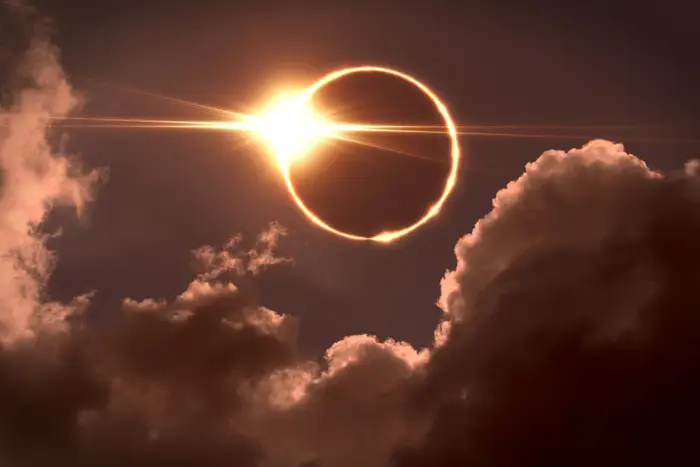Whether it’s pouring rain or the sun shining bright, New York is set to be in the trajectory of the total solar eclipse on Monday, April 8th.
It won’t matter if you will be observing from the path of totality upstate or catching the moon’s shadow obscuring most of the sun in NYC, cloud cover is a crucial factor impacting viewers’ experiences, underscoring the necessity of eclipse glasses for safety.
In an analysis dissecting the weather outlook for Monday and crucial pointers for New Yorkers gearing up to witness the eclipse.
The outlook for Monday suggests that New York City will enjoy perfect weather for eclipse viewing, with preliminary forecasts suggesting clear skies and a high temperature reaching 64 degrees.
While it’s a bit premature to forecast cloud coverage for Monday, current indications suggest that both New York City and New York State are likely to encounter minimal cloud cover throughout the day, according to most models.
Currently, upstate New York is poised to provide favorable viewing conditions. Buffalo is expected to have a high of 59 degrees under partly sunny skies on Monday, while Rochester is forecasted to reach 57 degrees with mostly sunny conditions. In Utica, where 99.7% totality is anticipated, temperatures are predicted to reach 60 degrees with sunny skies.
Read also: ‘Ring Of Fire’ Eclipse Wows Across Asia
New York City is expected to reach nearly 87% totality.
The eclipse begins at 2:10 p.m., peaks around 3:25 p.m. (this is when the sun will be most hidden), and ends around 4:36 p.m., when the edge of the moon leaves the edge of the sun.
During a total solar eclipse, the moon covers the sun’s disk entirely. In a partial solar eclipse, the moon only blocks part of the sun.
As totality approaches, observers witness mesmerizing displays of light, such as Baily’s Beads and the Diamond Ring, arising from the lunar surface’s imperfections.
Solar eclipses release powerful visible light, and NASA highlights the risk of exposing the retina to this intensity. Such exposure can damage cells responsible for relaying visual signals to the brain, compromising the eyes’ ability to perceive visual stimuli and potentially resulting in irreversible vision loss.
To observe the eclipse without risking eye damage, it’s imperative to utilize specialized glasses fitted with solar filters, commonly known as “eclipse glasses.”
Remember, it’s safe to remove eclipse glasses only when the sun is fully obscured by the moon. Be sure to promptly put them back on before the partial eclipse resumes and any parts of the sun become visible again.
